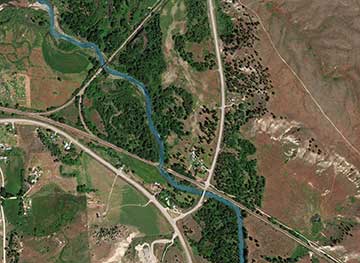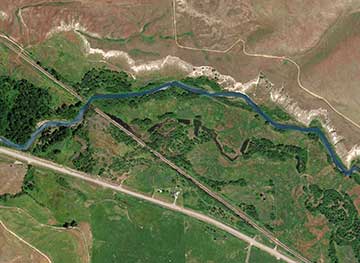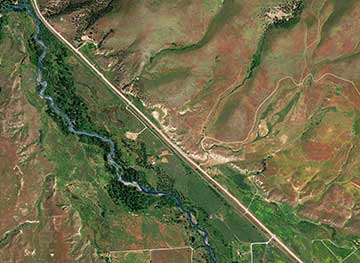By 1937 the Reservation had been homesteaded, and major changes to the Jocko River floodplain and the river's hydrology had taken place. A rail line, highways, farms and ranches, towns, an irrigation system, logging, and fish stocking had all taken a toll. Still the river remained clean and cold and supported healthy fish and wildlife populations. It was the decades after 1937 that really changed things, degrading habitats to the extent that fish and wildlife dependent on the river began to seriously decline. Explore the changes by comparing aerial photos from 1937 and 2002.
Learn More
By 1937 the Reservation had been homesteaded, and major changes to the Jocko River floodplain and the river's hydrology had taken place. A rail line, highways, farms and ranches, towns, an irrigation system, logging, and fish stocking had all taken a toll. Still the river remained clean and cold and supported healthy fish and wildlife populations. It was the decades after 1937 that really changed things, degrading habitats to the extent that fish and wildlife dependent on the river began to seriously decline. Explore the changes by comparing aerial photos from 1937 and 2002.
Learn More
By 1937 the Reservation had been homesteaded, and major changes to the Jocko River floodplain and the river's hydrology had taken place. A rail line, highways, farms and ranches, towns, an irrigation system, logging, and fish stocking had all taken a toll. Still the river remained clean and cold and supported healthy fish and wildlife populations. It was the decades after 1937 that really changed things, degrading habitats to the extent that fish and wildlife dependent on the river began to seriously decline. Explore the changes by comparing aerial photos from 1937 and 2002.
Learn More





